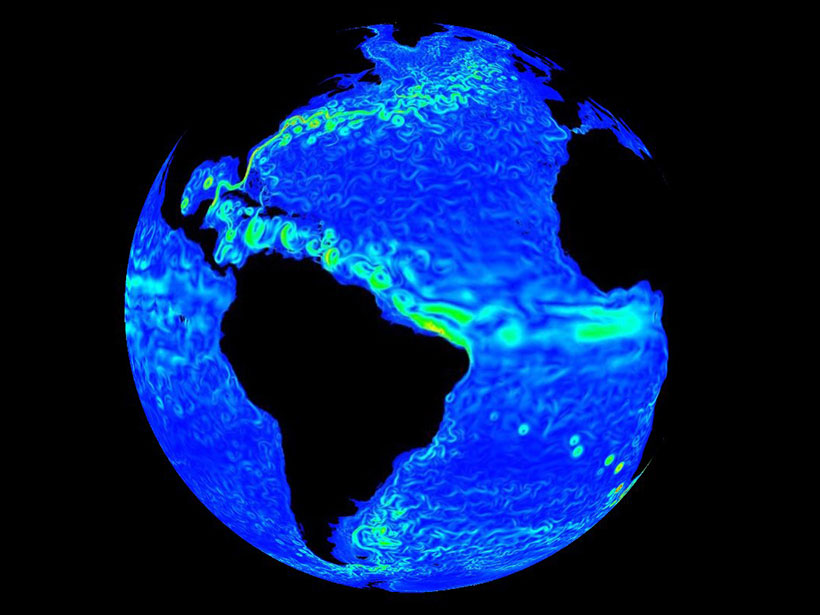If you’re looking for perfect circles in nature, don’t look to ocean eddies. A new study in the July 2019 issue of Remote Sensing of Environment found that ocean eddies, which are round currents that spin like slow-moving whirlpools across the world’s oceans, have an average shape that is less circular than scientists previously thought.
Researchers examined 24 years of satellite measurements of the sea surface, looking for unusual indentations and bulges in sea level that can indicate the presence of eddies. The team applied a software routine to automatically trace eddy shape on the sea surface and amassed a record of 2.6 million individual eddies.
By comparing their shapes throughout their lifetimes, the team, led by professor Ge Chen from the Ocean University of China, discovered that only 1% of the ocean eddies formed a perfect circle at any time. The majority of eddies were shaped like ovals throughout their lifetimes, regardless of their size or changes across their sometimes yearlong journey across the ocean.
Although the reason that eddies are less circular and more egg shaped remains unclear, the more realistic description of their shape could help improve estimates of how ocean heat, salt, and other chemicals move throughout the oceans.
—Jenessa Duncombe (@jrdscience), News Writing and Production Fellow
Citation:
Duncombe, J. (2019), What’s the true shape of an ocean eddy?, Eos, 100, https://doi.org/10.1029/2019EO129421. Published on 25 July 2019.
Text © 2019. AGU. CC BY-NC-ND 3.0
Except where otherwise noted, images are subject to copyright. Any reuse without express permission from the copyright owner is prohibited.

